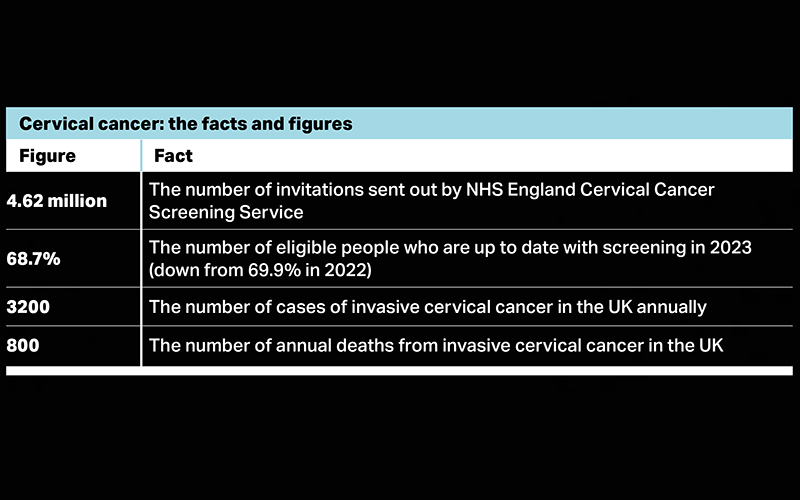Jemma Shead, a Senior Biomedical Scientist at Synnovis, King’s College Hospital, looks at the issues.

January is Cervical Cancer Awareness Month, so it is a fitting time to revisit some of the strategies employed in the prevention of the disease. Through vaccination and screening for pre-cancerous lesions, we can support the UK government pledge to eradicate cervical cancer by the year 2040.
In the UK, cervical cancer is the 14th most common cancer in people with a cervix. Despite having the potential to prevent up to 5000 cases per year, cervical screening uptake is currently at less than 69%, according to national data.
In the last decade, the positive effects of the HPV vaccine roll-out since 2008, the routine employment of genomic methods to detect the presence of relevant high-risk HPV infections and immunotherapy treatment for invasive disease have demonstrated progression in the fight against invasive cervical cancer. HPV vaccination alone has led to an 87% decrease in cervical cancer. However, significant barriers to vaccination and screening persist regarding healthcare equity and inclusion.
A deeper, more inclusive assessment of the reasons that are behind screening avoidance is desperately needed, and a proactive approach to the currently well-known barriers is also essential. This includes (but is not limited to) the routine and consistent use of inclusive language, the ability for all individuals with a cervix to receive invitations for screening, safe access to all relevant screening services in a timely manner and robust IT systems to support effective follow-up, track vaccination status, and ensure that all opportunities to increase vaccine uptake are sought.
Cervical Cancer Symptoms
- Vaginal bleeding after sex
- Vaginal bleeding after menopause.
- Vaginal bleeding between periods or periods that are heavier or longer than normal
- Vaginal discharge that is watery and has a strong odour or that contains blood
- Pelvic pain or pain during sex.
While the screening process can be challenging for many, several resources exist that offer inclusive information and advice to people from diverse backgrounds regarding what to expect, and why it is important to consider doing so, such as the NHS Cervical Cancer Screening Programme website and Jo’s Cervical Cancer Trust. These sites also provide information regarding the symptoms.
As scientists, we should endeavour to raise awareness and seek to empower ourselves and our wider communities.
We can do this by making sure we are up to date with our screening, engaging with any opportunity to proactively manage our health and discussing our experiences widely.
We must also speak up if we see opportunities for improvement, especially regarding inequalities in healthcare, to ensure that a future without cervical cancer is possible for everyone, regardless of ethnicity, religion, sexual orientation, or gender identity.

